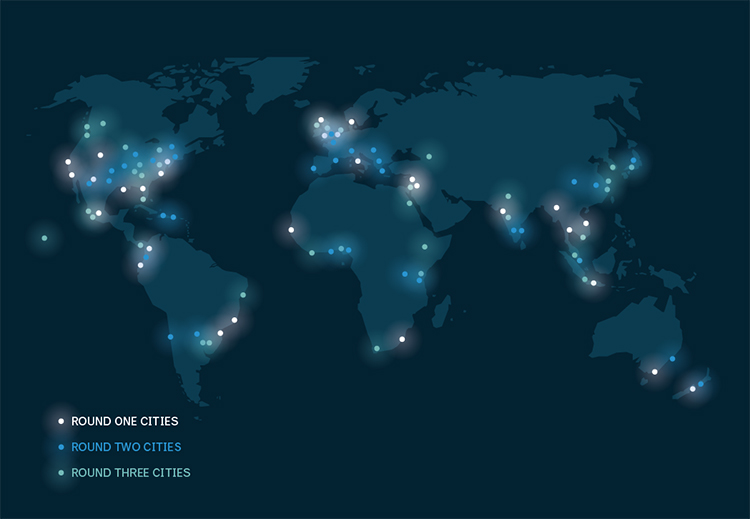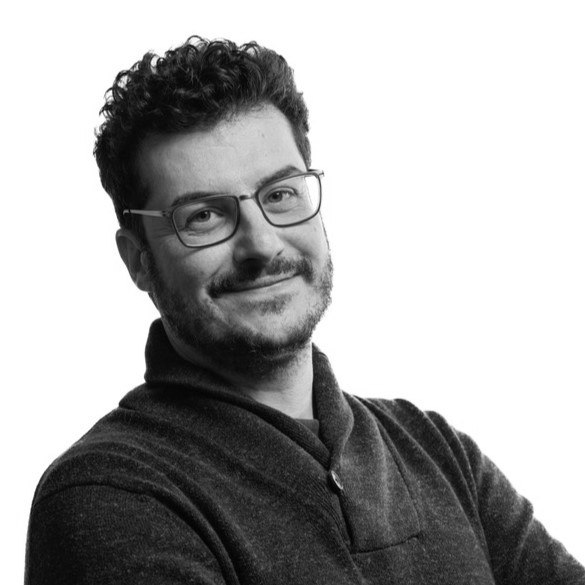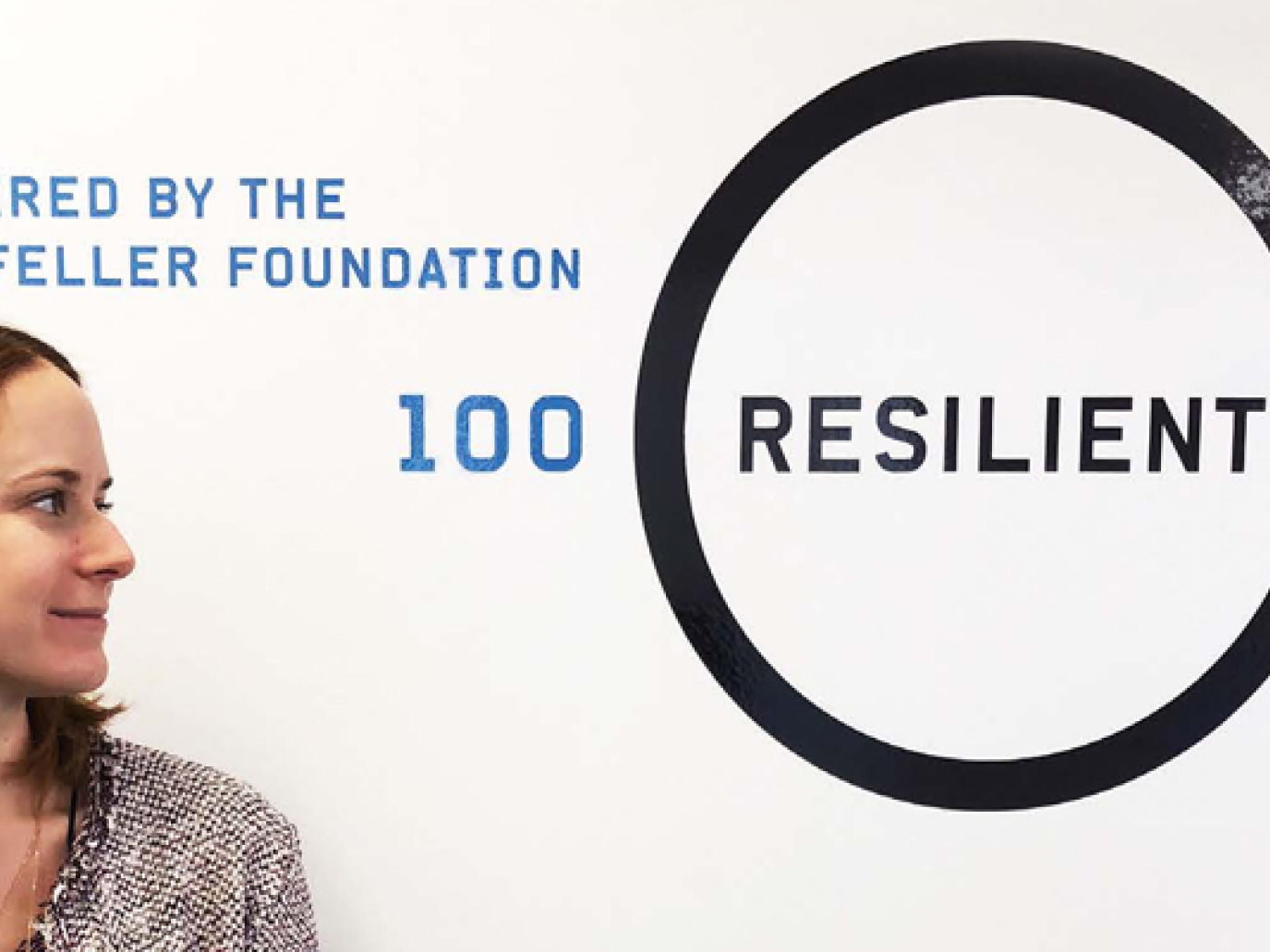How can we implement a real circular economy without having cities geared for resilience against stress and shocks? This is a key area of reflection when discussing the future of cities and in particular “circular cities.” To learn more about it we flew to London to visit the 100 Resilient Cities programme offices.
100 Resilient Cities (100RC) was created in 2013 by the Rockefeller Foundation on its centennial. It began working with the first group of 32 cities in December of 2013. Before the second round in 2014, it received over 330 applications from 94 countries and then announced the 35 cities to be included in round 2 by December. Now they are nearing 100 selected cities.
To learn more we met the EU Regional Director, Lina Liakou, who is overseeing the 100 Resilient Cities work with cities in Europe and the Middle East, in a luminous office not far from St. Pancras Station. Before joining 100RC, Lina was Deputy Mayor and Chief Resilience Officer for the City of Thessaloniki, Greece. In this capacity she led the development of the city’s Resilience Strategy.
Our member cities
Following a highly competitive application process (1,000+applications), 100RC selected a first group of cities in December 2013, announced the second in December 2014, and the third in May 2016

How did the 100RC project start?
“In 2013 the Rockefeller Foundation wanted to celebrate the 100 years from its foundation by doing something that would aggregate the different lessons learned from other programmes. The president of the Rockefeller Foundation, Dr. Judith Rodin, proposed the creation of an organisation that would select 100 cities all over the world and help them develop their resilience. This would move the practice and the discussion about resilience forward. Furthermore, these cities would then act as examples for thousands of other cities all over the world.”
What is the mission of the 100RC?
“Its core contribution involves helping selected cities establish a Chief Resilience Officer (CRO) inside the city council. Her/his role is to align different priorities and make the cities resilient to shocks and stress. First, CROs have to define their city’s priorities and set a Resilience Strategy. This is then implemented by bringing a series of actors from private and non-profit organisations to help the cities move forward. It’s important to have not only public sector support, but also a role for the private sector that can develop tools and services for urban resilience. This enables a faster dissemination and application of resilience strategies.”
Resilience is a key concept in the sustainable and circular economy mind-set. What defines a truly resilient city?
“We define urban resilience in a much broader way than how it is traditionally considered. A Resilient City is not only a city that survives shocks but is actually a city that adapts and develops even better in response to the shocks and stresses. To achieve this, it is essential to understand how stresses are connected with shocks and vice-versa: it’s a very integrated approach. In the past we focused only on disaster risk or resilience. We need a broader vision that connects the climate, natural resources, social fabric and the economy, whilst at the same time having effective action plans for shocks already in place.”
What is the role of CROs?
“Cities need somebody with a mandate on resilience. CROs possess integrated and horizontal thinking, and are capable of identifying who (from inside or outside the city) can help them to achieve their goals. We have a methodology that enables us to compare different cities and different strategies. This way we can learn from each other, aggregate needs, collect lessons learnt and pass them on to all the various CROs. The Foundation creates a lot of opportunities and spaces for peer-to-peer learning dedicated to CROs. The first cohort of heroes was able to teach and inspire the second cohort and then the lessons learnt from the second cohort were fed to the following. We have Learning Communities, online and offline conversation, and key events for dissemination.”
You were CRO for Thessaloniki, Greece. What was your job there?
“First, I set a resilience strategy as a holistic narrative, defining where the city wants to go in the next fifty years. Thessaloniki didn’t have a long-term strategy. So, the CRO office created a unit that worked horizontally connecting all the PA offices with the non-profit sector, the communities, the private sector and academia. We brought them into the discussion on what the city should look like.
Through this process a lot of new themes and connections to different projects emerged. We reinforced trust on public and metro systems; created Safe Routes to schools; and worked on the economic development of the bay, in connection with climate predictions for the Thermaic Gulf. This last project was a very systematic one and we were able to leverage resources from the European Investment Bank and the World Bank. They gave technical assistance for us to move forward with the priorities established in the strategy. We also submitted, along with stakeholders, the first Horizon programme on resilience.”
How can CROs address their resilience strategies?
“Each city has its priorities. Resilience for Milan may be more related to how climate connects with urban planning. In Paris you connect social issues and social integration with climate adaptation projects. It really depends on the context.”
How important is it to reshape city budgets so as to make them resilient?
“Part of the work of CROs is to understand the budget and try to put resilience around how the city does budgeting. Furthermore, the CRO has to tap external funds. For example, there are multiple EU funds that can be used for urban resilience. Last but not least, we create a dedicated team that works towards financing resilience. They will train CROs on how to work with the multilateral banks and general investors to support city needs. Often, officials have funds but lack a pipeline of projects or they have projects that have no financing. We have to bridge these gaps and help cities leverage resources. We also have to help investors understand the value of resilience and long term planning.”
Why work on cities and not just implement nation-wide strategies?
“Cities are the place to be. The 21st century is the century of cities. Stresses, shocks, vulnerabilities and risks are increasing in cities.”
Which megatrends are emerging in the resilience strategy?
“Especially in Europe the circular economy is a fast and relevant emerging trend. Trying to reinvent the economic sector is a very high priority because of the general financial crisis that Europe went through and the impact of the linear industrial economy on the environment and health. The circular economy also connects with resilience in terms of relevance of waste management and water.
Globally, other trends include: 1) water in relation to flooding, consumption, scarcity and quality; 2) flows of population and population changes inside cities (it is key to adapt to different changes in population, both in terms of needs and numbers, and adapting infrastructure); 3) youth and ageing population: the first as the centre of economic and social development, the latter in terms of adapting our cities to a growing population of senior citizens.
All the megatrends have to be connected. For example, we’ve seen a lot of projects that are related to the repurposing of public spaces, connecting climate adaptation and the rise of migration issues, while creating a safe environment for kids. This problem can be faced in an integrated way. That is the most important type of thinking that a CRO has to implement.”
100 Resilient Cities, www.100resilientcities.org



